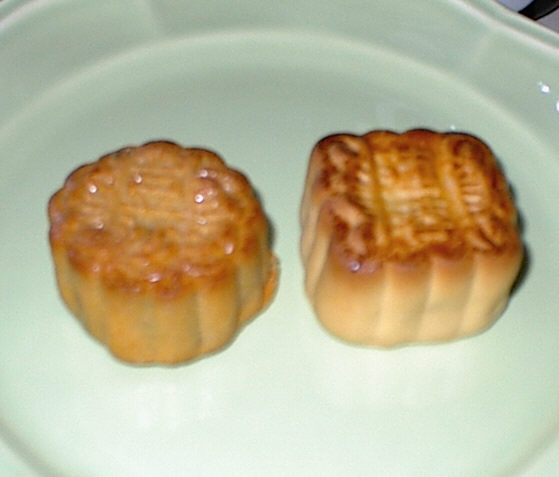Mid Autumn Festival

The festival came about as a celebration to autumn in Tang Dynasty (618-906 AD). After a long period of prosperity, people's mind shifted from hunger and war to arts and leisure. The educated elite of the time started to promote a festival to celebrate the beauty of autumn: the moon full and bright, the air fresh and crisp, the sky high and clear, the weather nice and cool and the laurel blossoms in full bloom fragrant and sweet. The combination inspired poets to rhyme and singers to chant. What greater excuse was there to take a break and admire the world around us. To accompany the celebration, let's have some tea, some wine and some pastries to snack with.
The custom of giving and feasting on moon cakes however was said to come about from a different time and place. When Mongolians invaded China, the Sung Dynasty came to an end (around 1279 AD), Chinese people rebelled against the invading reign. The rebels decided to ambush the occupying Mongolian troops around the mid-autumn time frame. To organize the attack, they put messages of the time and place of attack on pieces of paper and stuffed them in home-made cakes and gave the cakes to friends and relatives to synchronize the attack. The moon cakes we have today do not have messages, though fortune cookies do. They have instead egg yolks inside, for egg yolks resemble the full moon. Over time, finer varieties and regional differences developed to account for today's moon cake phenomenon.
You can tell that Mid-Autumn festival is around the corner when bakeries, Chinese, Hone Kong style or Taiwanese, put out their specialty moon cakes on display and Asian supermarkets stock boxes of imported or big-chain bakery moon cakes. A box of 4 moon cakes (about one to one and a half pounds) can go from $15 to $30. Usually the more egg yolks in a cake, the more expensive it becomes. Besides egg yolks, the commonly used stuffing ranged from red bean paste, dried black dates paste, mung bean paste, lotus seed paste to candied pineapple paste. Sometimes, walnut bits or pine seeds are mixed into the paste, too. There are two crust varieties, flaky or smooth. The smooth kind of crust is the traditional one and is said to come from the northern part of China. The flaky crust is the southern regional variation. The flaky crust pastries, about 3 to 4 ounces each, go for $1 to $1.50 each, and can be found in bakeries all year round. Some bakeries, like Sheng Kee, sell a miniature version of the smooth skin moon cakes all year round.
Come September, won't you pick a bright moon night, brew a cup of tea, have some moon cakes and enjoy the autumn sky.